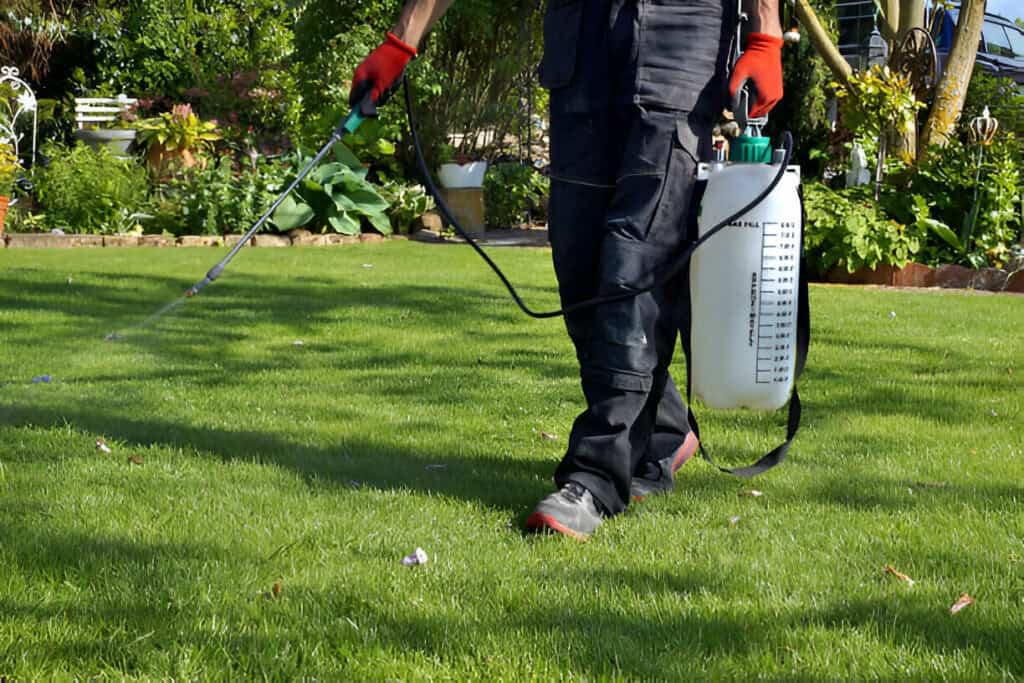Table of Contents
- Maintaining Proper Distance to Minimize Chemical Exposure Risks
- Effective Techniques for Consistent 6-10 Feet Spraying Practices
- Protective Measures to Enhance Safety During Chemical Application
- Training and Compliance Strategies for Safe Chemical Handling
- Future Outlook
Maintaining Proper Distance to Minimize Chemical Exposure Risks
When handling and spraying chemicals, it is crucial to maintain a safe buffer zone of 6 to 10 feet between the applicator and the target area to drastically reduce the risk of exposure. This distance acts as a protective barrier, minimizing direct contact with hazardous substances that can cause respiratory, skin, or eye irritation. Sprayers should also account for environmental factors such as wind speed and direction to prevent chemical drift that can unintentionally affect nearby individuals or surfaces.
To ensure effective protection during application, always adhere to these safety measures:
- Wear appropriate personal protective equipment (PPE): gloves, masks, and goggles are essential.
- Observe wind conditions: spray with the wind to prevent exposure.
- Use calibrated equipment: maintain proper spray pressure and nozzle settings for controlled application.
- Mark and restrict access: keep bystanders and pets away from the treated zone until it is safe.
Effective Techniques for Consistent 6-10 Feet Spraying Practices
Maintaining a precise distance of 6 to 10 feet when spraying chemicals is critical for maximizing the effectiveness of application while ensuring safety. Professionals recommend using visual markers or simple tools like measuring sticks or laser distance meters to consistently gauge and hold this range. When spraying, adopt a steady gait and controlled arm movement, which help avoid over-application or drifting. Additionally, using equipment with adjustable nozzles can aid in calibrating the spray pattern to perfectly cover the target area, increasing efficiency and minimizing chemical waste.
Key strategies to reinforce these practices include:
- Conducting pre-application site assessments to identify safe spray zones and potential obstacles.
- Wearing appropriate personal protective equipment (PPE) to guard against accidental exposure.
- Implementing routine training sessions focusing on distance maintenance and equipment handling.
- Monitoring weather conditions to avoid spray drift caused by wind gusts or temperature fluctuations.
By adhering to these techniques, applicators ensure both environmental safety and operational precision, ultimately upholding regulatory compliance and promoting sustainable spraying practices.
Protective Measures to Enhance Safety During Chemical Application
Maintaining a safe distance when applying chemicals is crucial to minimize health risks and prevent accidental exposure. Experts recommend staying at least 6 to 10 feet away from the spray area to reduce inhalation of harmful vapors and contact with liquid residues. This buffer zone acts as a protective shield, especially when using handheld sprayers or fogging machines, ensuring that spray drift does not reach the operator or bystanders. Implementing this simple yet effective practice can substantially decrease the potential for respiratory distress, skin irritation, or other chemical-related injuries.
To enhance safety further, it is essential to equip yourself with proper personal protective equipment (PPE), which complements maintaining distance during application. Key items include:
- Chemical-resistant gloves and long-sleeved clothing to avoid skin contact
- Respirators or masks fitted to filter out airborne particles and vapors
- Eye protection such as goggles or face shields to guard against splashes
- Non-slip boots to prevent accidents in wet or slippery treated areas
By combining these protective tools with strategic spatial awareness, users can mitigate risks effectively while handling chemicals, thereby promoting a safer environment for themselves and others nearby.
Training and Compliance Strategies for Safe Chemical Handling
Ensuring safety during chemical application starts with rigorous training that emphasizes the importance of maintaining a minimum distance of 6-10 feet when spraying. Employees should be thoroughly educated on the potential risks of close exposure, including respiratory irritation and skin contact, which can lead to long-term health complications. Training programs must incorporate practical demonstrations alongside theoretical knowledge to reinforce the correct handling techniques. Additionally, it is crucial to implement routine refresher courses to keep all staff updated on evolving safety protocols and regulatory standards.
- Use personal protective equipment (PPE) as outlined in safety guidelines.
- Conduct pre-use equipment inspections to prevent leaks or malfunctions.
- Enforce clear demarcation of safe zones around spray areas to maintain distance compliance.
- Document all training sessions and compliance audits for accountability.
Compliance strategies should incorporate regular monitoring and evaluation to ensure that safety measures are actively followed on-site. Supervisors can utilize checklists and direct observations to verify that the recommended safe distance is consistently observed. Establishing a culture of safety involves encouraging workers to report unsafe practices without fear of reprisal, fostering an environment where adherence to protocols becomes second nature. Ultimately, combining comprehensive training with vigilant compliance checks will minimize exposure risks and promote a safer workplace.
Future Outlook
In conclusion, maintaining a safe distance of 6 to 10 feet when spraying chemicals is a critical safety measure that protects both the applicator and those in the surrounding environment. Adhering to these guidelines helps minimize exposure to potentially harmful substances, reduces the risk of accidents, and promotes responsible chemical use. As awareness and compliance grow, we can ensure safer practices that benefit public health and the ecosystem alike. Staying informed and vigilant is key to fostering a safer, cleaner environment for all.Check Our Other Blogs
- StunGun – Your Trusted Source for Stun Guns, Laws, and Self-Defense Tips
- PepperSprayLaws – Your Trusted Resource for Pepper Spray Information
- StunGunLaws – Your Trusted Guide to Stun Gun Legality and Safety




